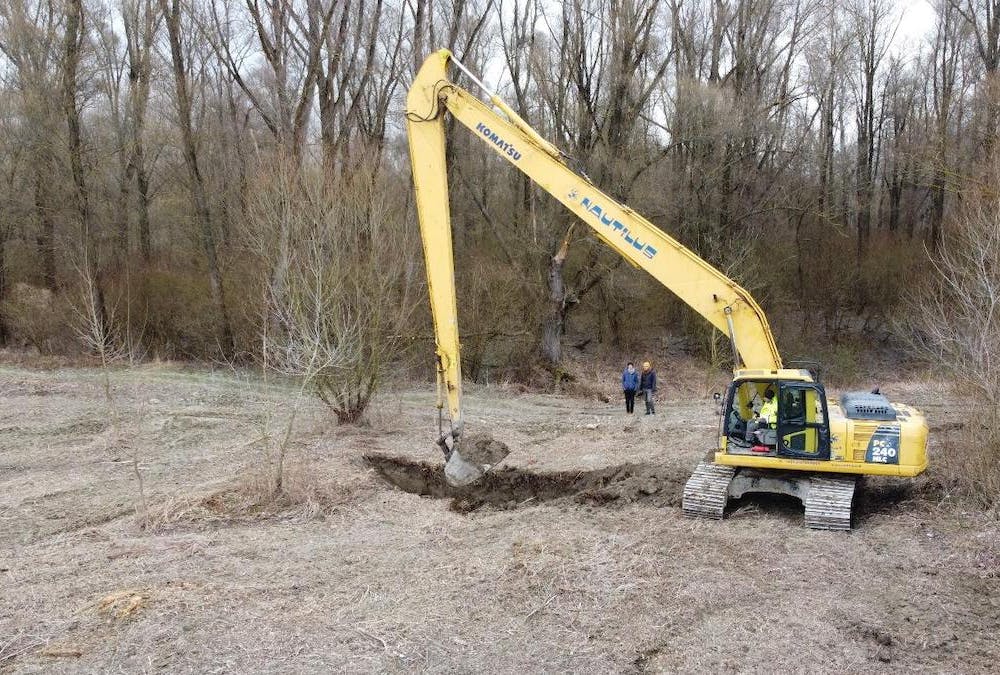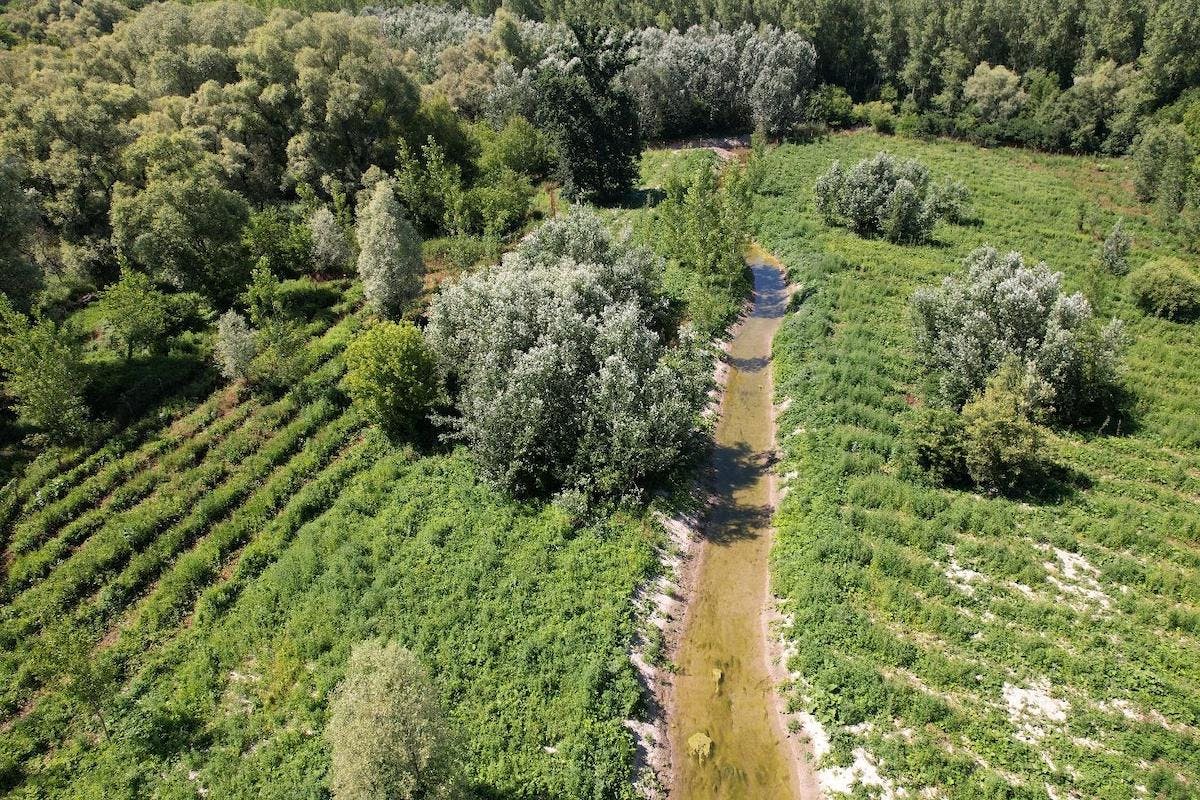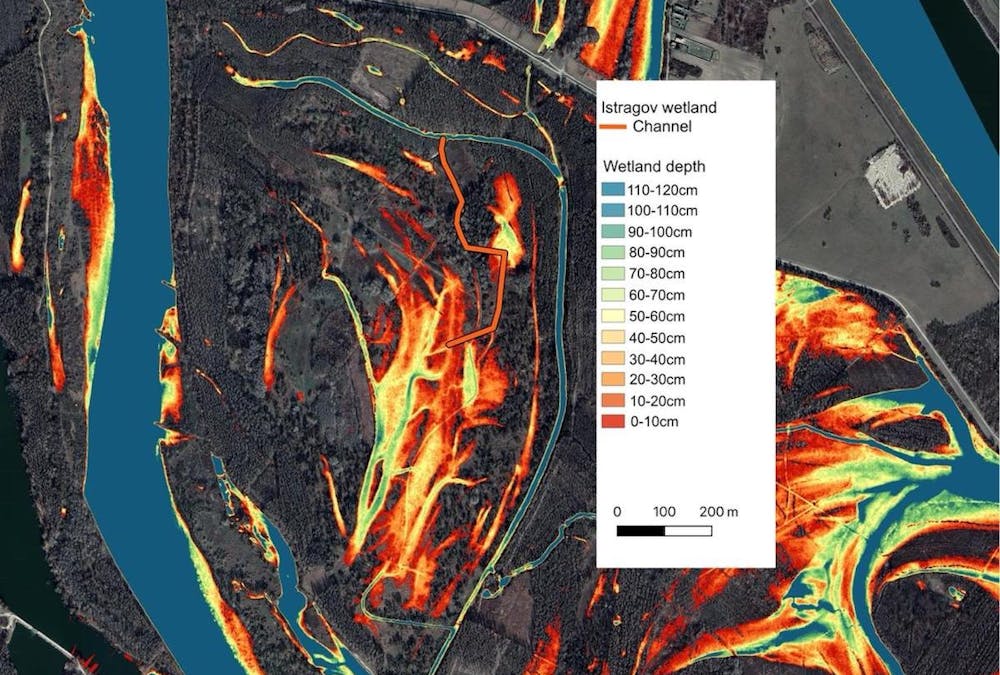- Management Plan
- Final Report
- Total budget: £40,000
- Budget spent: £40,000
- Status: Implemented
Over recent decades, large swathes of Slovakia’s wetlands have been lost. They have been drained to make way for agriculture as a result of the construction of dams for hydroelectric power, as well as for timber production. Wetlands are an integral part of the Danube floodplain landscape in Slovakia and draining them to plant trees has detrimental impacts on the environment. Wetlands store large amounts of carbon and are home to a diversity of plant and animal species that are specially adapted to the wet conditions. One of these species is the nationally endangered and endemic Pannonian root vole, which has declined drastically in Slovakia in response to disappearing wetlands. This project will turn forest back into a wetland by digging 650 meters of ditches. This will kickstart a “flood” of change and bring back a healthy functioning, sustainable and wilder ecosystem.
Project Timeline
June 2024
10.7 ha of land bought for wetland protection.
2022 - 2025
Ongoing annual simulated floods and monitoring of the improvement to Pannonian root vole habitats (carried out by Comenius University Faculty of Natural Sciences). Additionally, regular monitoring of areas affected by floods will be conducted using GPS and drone mapping.
The Intervention
This ambitious project aims to restore an area of degraded wetland by digging water channels that to reconnect the site to a nearby river. These channels will enable water to travel from the river to the core area of the wetland and restore a more beneficial flooding regime. The project will also remove encroaching woody vegetation that is outcompeting the native wetland plant communities.
Over time this intervention will:
- create suitable conditions for the regeneration of the wetland plant communities;
- suppress the expansion of non-native plant species;
- create suitable habitat for a diversity of invertebrates, amphibians, birds and mammals;
- and finally, sequester vast amounts of carbon.
We will be supporting our partners BROZ to create 650 meters of water channels to restore a 64ha wetland.

Learn More About the Context Behind this Project
The Importance of Wetlands
Wetlands can be found anywhere water interacts with land. The diverse and complex conditions of wetland habitats can support a diversity species, including an abundance of invertebrate and bird life. Wetlands are therefore some of the most biodiverse ecosystems on earth. They also play a crucial role when it comes to climate change. They help fight floods by absorbing excess water and limit droughts by releasing water slowly.
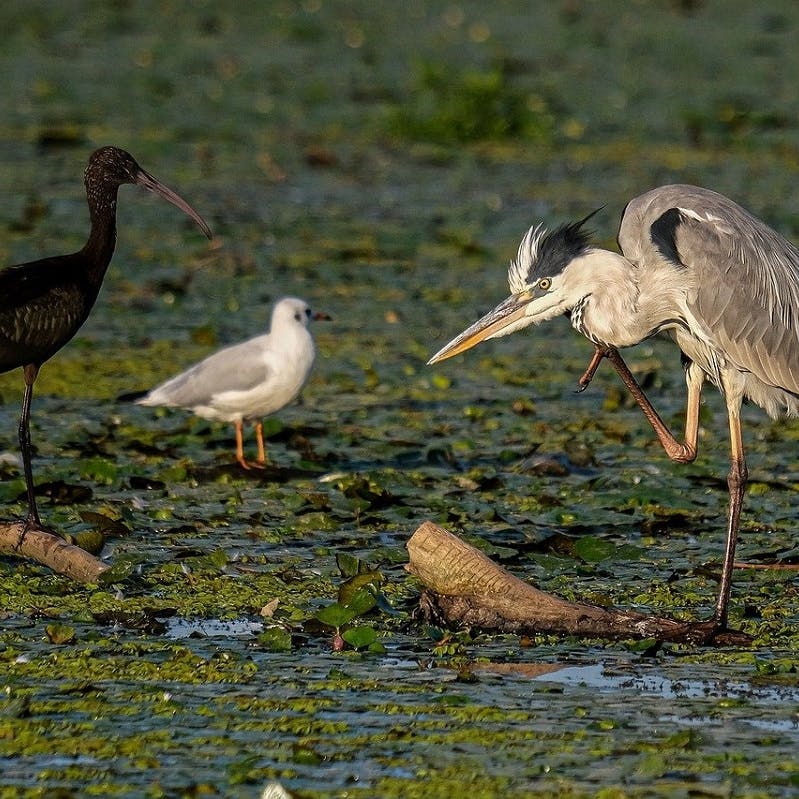
Wetlands and Carbon
The waterlogged conditions combined with high plant productivity make many freshwater wetlands, including the wetlands we are restoring, significant carbon sinks. Our wetland has the potential to sequester between 200 – 350 tonnes of carbon per year (Mitsch et al., 2013; Brix et al. 2001). When converted to carbon dioxide this means that every year it will sequester about 1290 tonnes of CO2 out of the atmosphere. That is the equivalent of you taking 3902 flights between Lisbon and London or the full footprint of about 189 average Europeans each year.
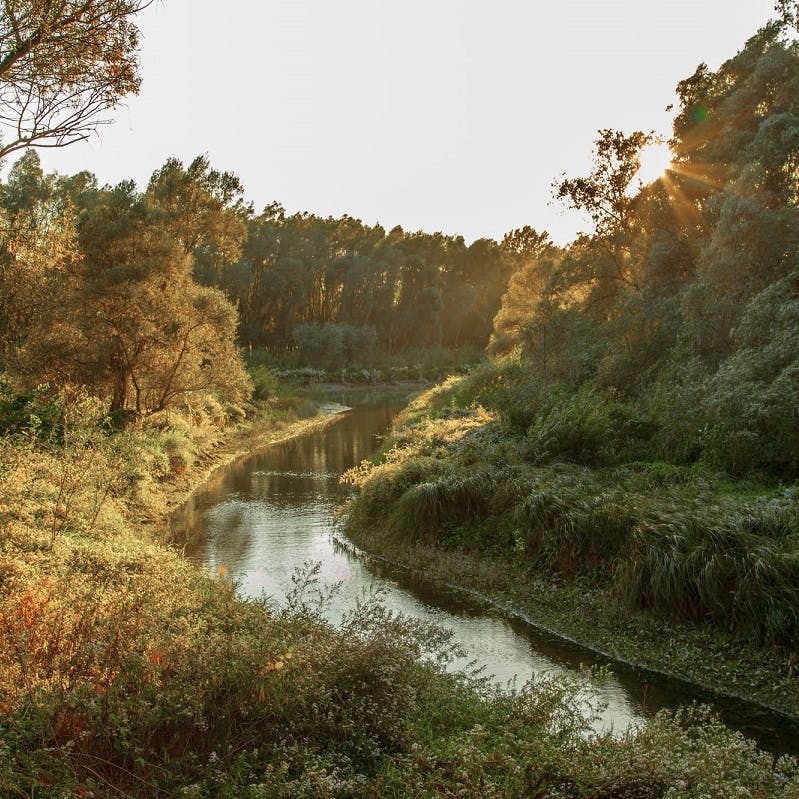
Saving a Glacial Relict
The Pannonian root vole is what’s known as a glacial relict. This means it is a species leftover from the cold-adapted communities of the Ice Age. As the climate warmed and the continental ice sheets retreated, the Pannonian root vole population disappeared from most of its range. However, it managed to avoid complete extinction, surviving as isolated populations in the vicinity of the Danube river in Slovakia, Hungary and Austria.
Despite clinging on for thousands of years after the Ice Age, the Pannonian root vole is now under immense pressure from human activity. As well as having an already restricted range, the Pannonian root vole has very specific habitat requirements, which makes it a particularly sensitive species.
Their survival hinges upon the conservation and restoration of functioning wetland habitats.

Our Project Area
The site we are restoring was drained during the 80s and 90s primarily due to the construction of a dam, and secondarily to create suitable conditions for timber production. An extensive wetland ecosystem, 80ha in size, was lost. This is a perfect example of how not all tree planting is beneficial to the environment.
Prior to this project, the site had still flooded, but very rarely and for such a short period of time that the wetland’s natural communities were unable to establish. The native plant species that are important for the Pannonian root vole had been in a state of decline and had been replaced by woody vegetation, such as shrubs and trees, and invasive plants had taken over. Our intervention has begun to reverse this situation. See the transformative results in the videos below.
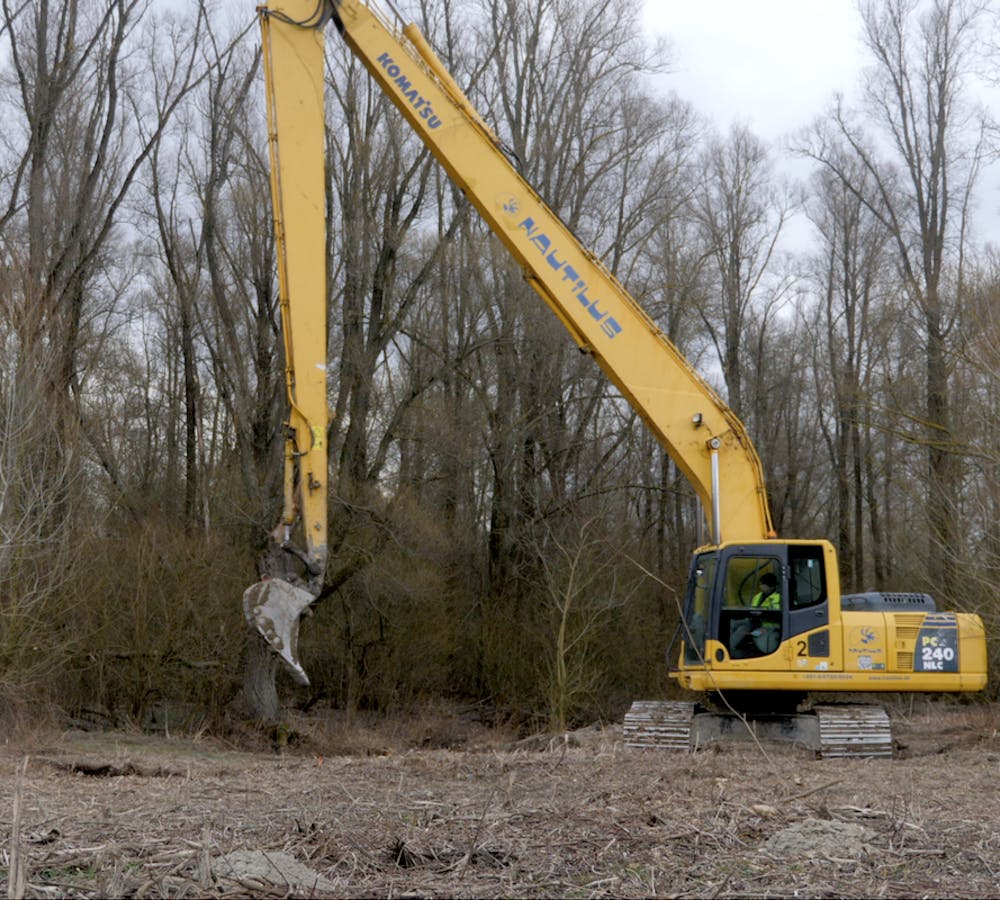
See the impressive results of the first flood below!
6 Month Update: December 2022
August 2023 Update:
Showing the results of this year's spring & summer floods.
the team behind the project
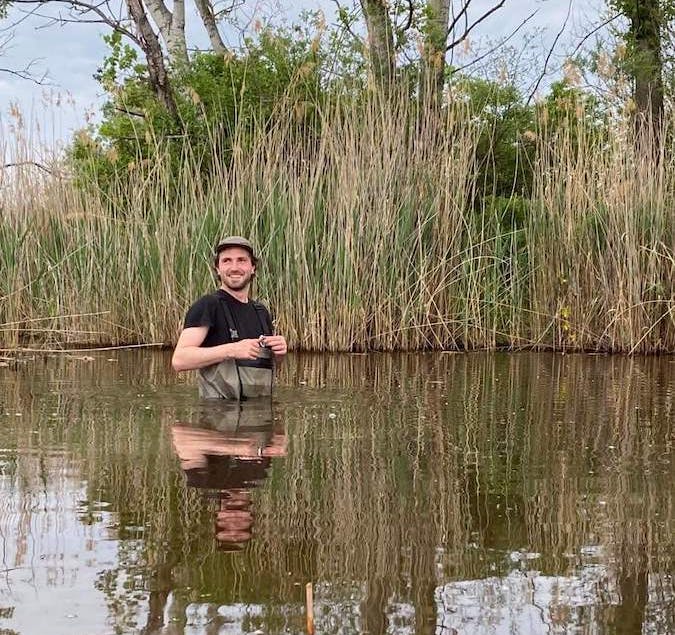
Jakub Sigmund, Project Manager at Broz

Hannah Kirkland, Conservation Biologist at Mossy Earth
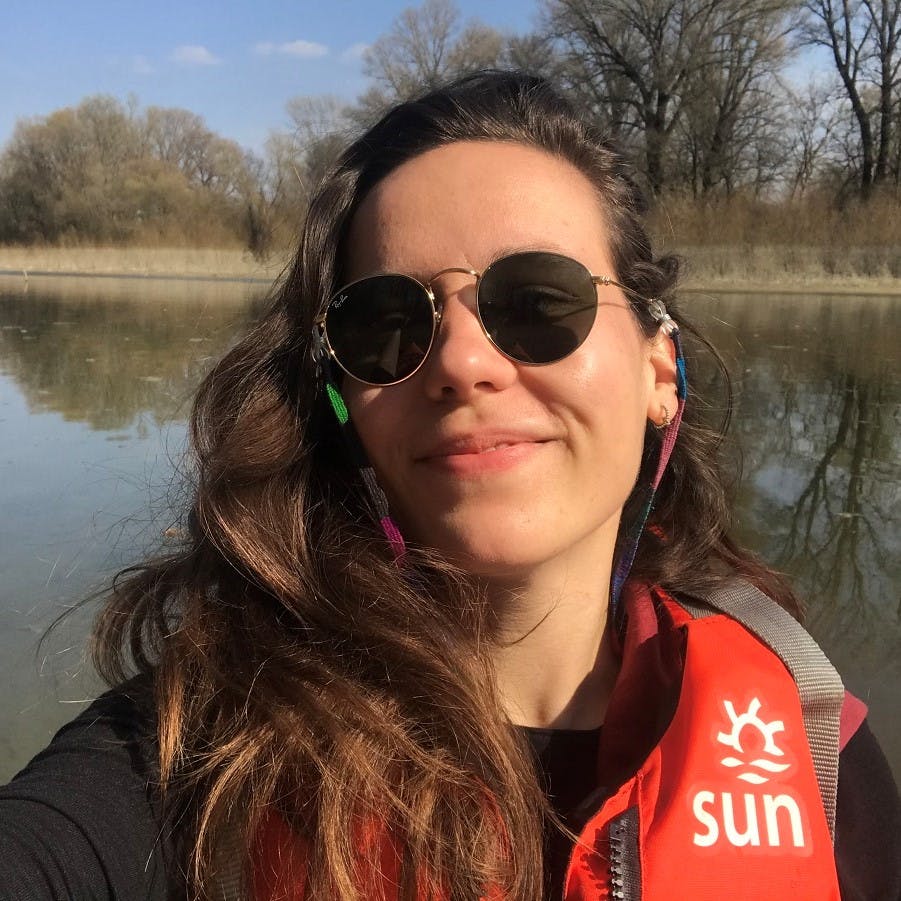
Adriana Brossmannova, Conservation Biologist at Mossy Earth

Restoring a Floodplain Forest
Returning a regular flooding regime to create a temporary wetland habitat.
Sources & further reading

- “Wetlands, carbon, and climate change” - Mitsch et al.
- “Are Phragmites-dominated wetlands a net source or net sink of greenhouse gases?” - Brix et al.
